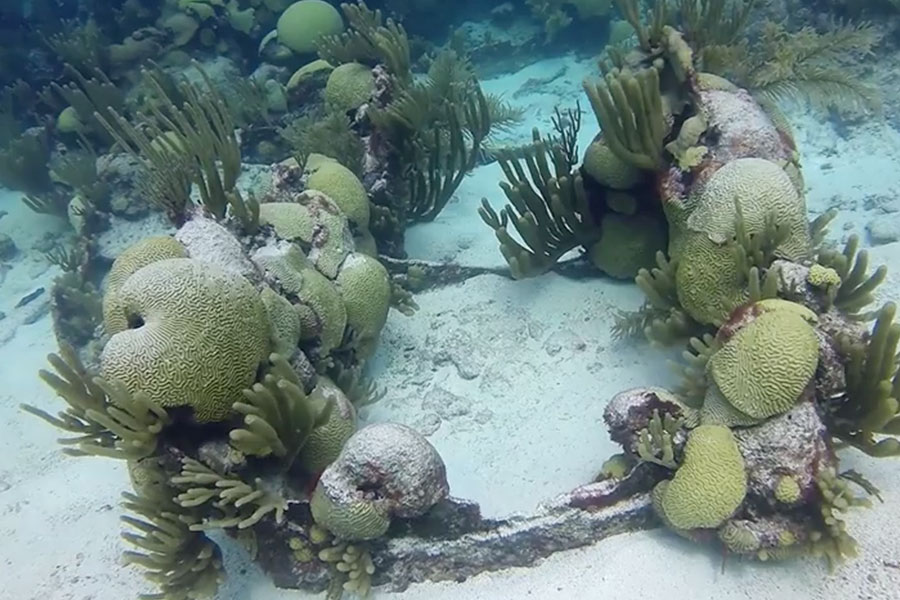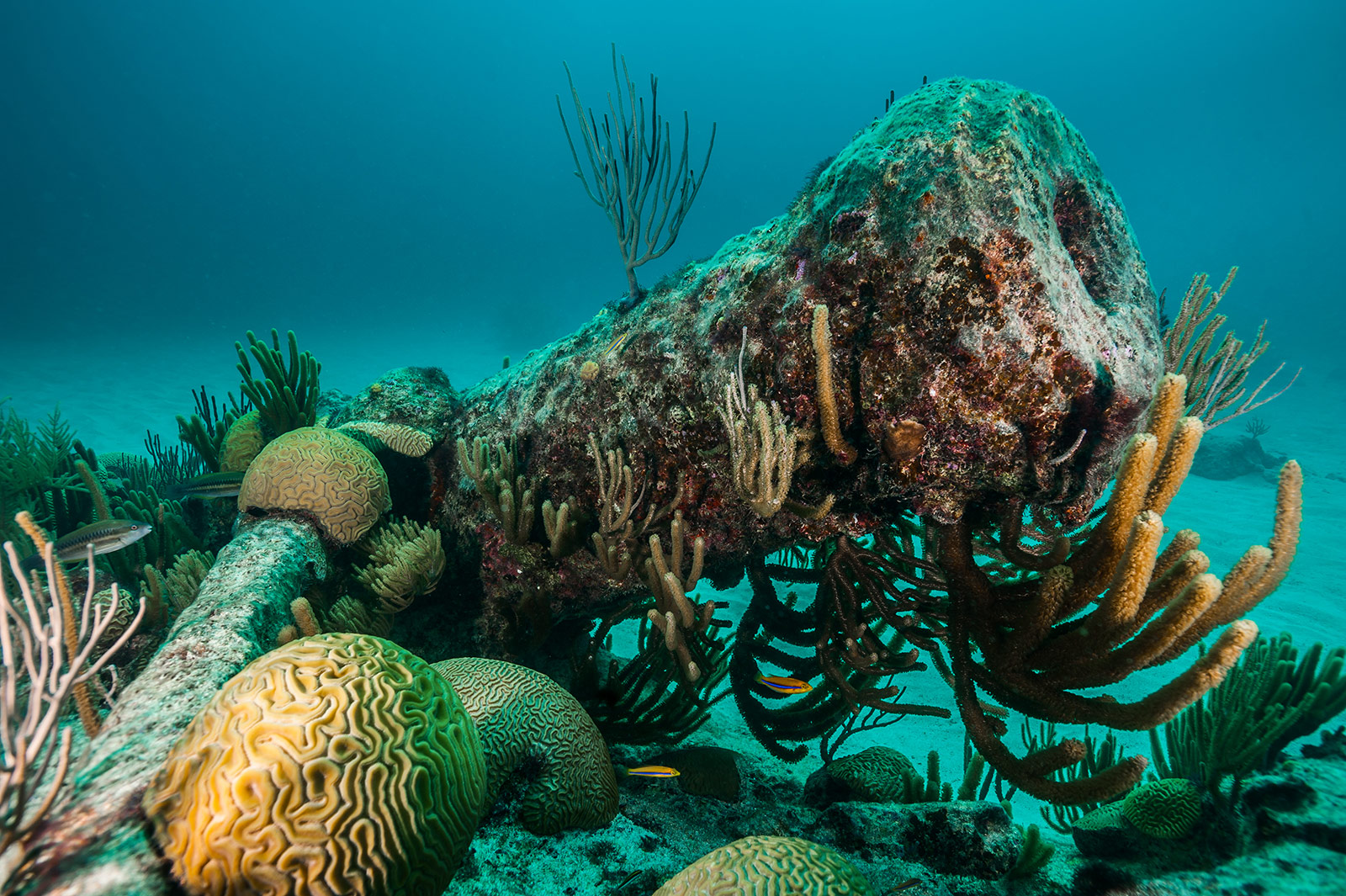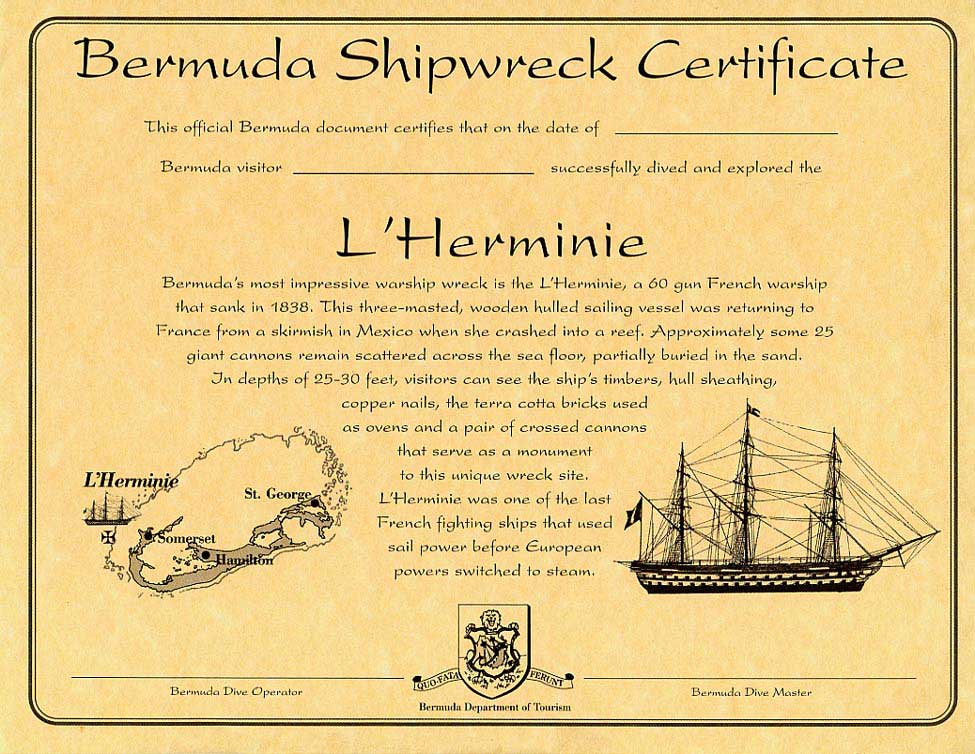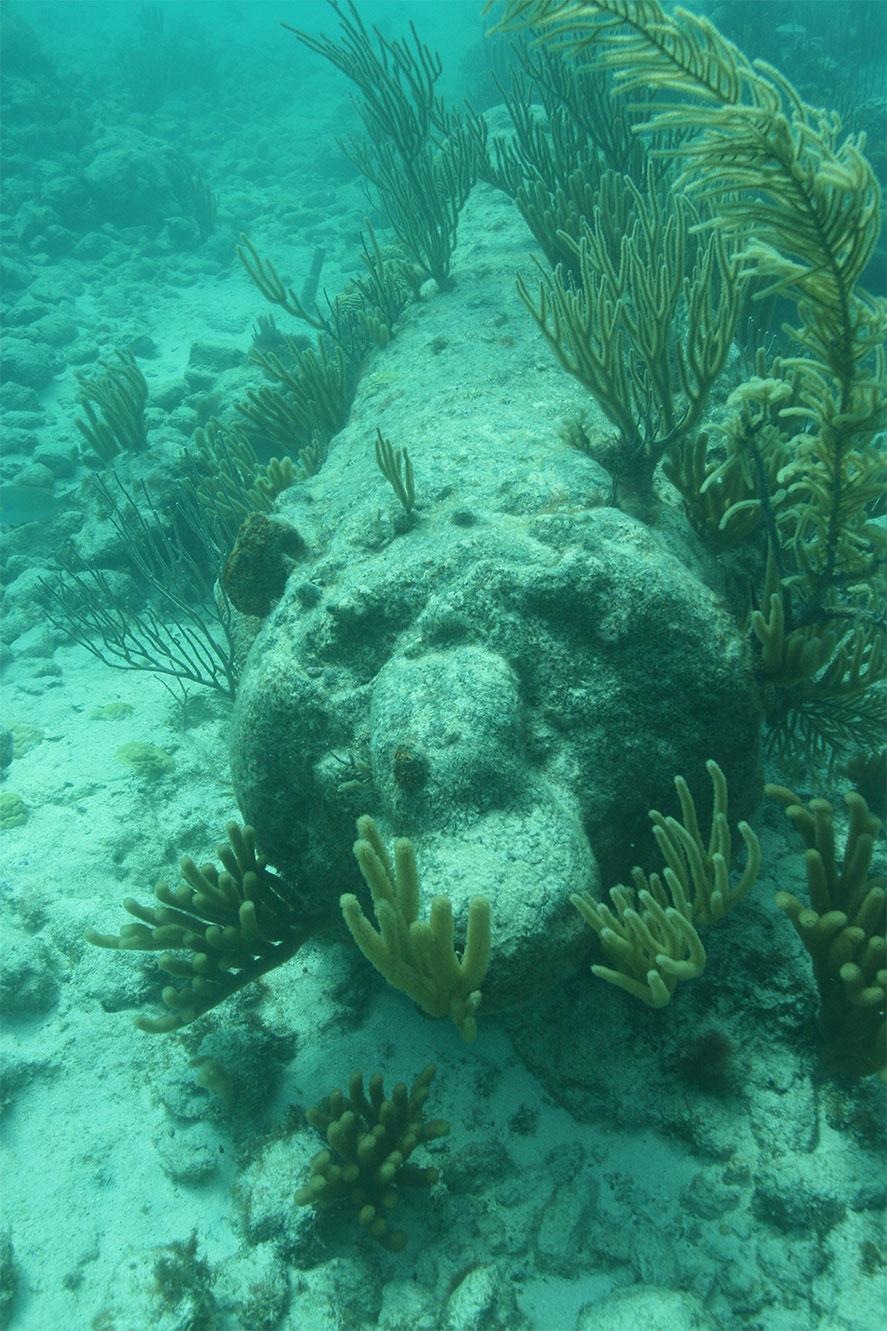Launched in 1824 but not completed until four years later, Bermuda’s most impressive warship wreck is this first-class, 60-gun French frigate. L'Herminie was huge for a naval warship of her day, at 300 feet long and carrying 60 cannons, and she was one of the last frigates built before the shift to auxiliary steam power in French warships. L’Herminie was one of eight frigates designed by Martin Boucher in 1823 and designated as a La Surveillante-class warship – built to carry 30 French 30-pounder cannons and 30 other guns.
In 1837 during the Mexican Revolution, the French frigate was ordered to Mexican waters, where L’Herminie was part of a squadron that blockaded Vera Cruz and other Mexican ports. On arrival in Havana, Cuba, in August of 1837, over 130 members of her crew came down with yellow fever. Figuring the crew would be too weak to fight, France's high command recalled the ship to France. Under the command of Commodore Bazoche, L'Herminie left Havana for France on December 3. During the Atlantic crossing, the ship encountered increasingly heavy seas, and the captain decided to wait out the bad weather in Bermuda. By the time land was detected, the ship had inadvertently wandered well inside a treacherous stretch of Bermuda's northwestern-facing barrier reef. Soon after, in early 1838, L'Herminie grounded on the reef. Before the ship started to break up, a group of local boats came to her assistance.
Despite rough sea conditions, all 495 officers and crew were safely evacuated to Ely’s Harbour from the doomed ship. The following day, several of the ship's stores were successfully salvaged. An advertisement appeared in the newspaper demanding that such material be handed to the ship’s agent at Ely’s Harbour, Thomas Tucker. Goods from the ship later offered for sale included copper hinges, hemp hawser, blocks, sails, hooks, thimbles, a wheel, mast hoops, iron-belaying pins, a stove mounted with brass, a set of fire utensils, iron rails, iron stanchions, mess tubs, leather buckets, brass wire conductor, copper stove funnels, harness casks, lead, lead pipes, copper pumps, jack screws, leather hoses, cabin doors, tables, crockery, ladders, and a marble slab.
CURRENT CONDITION
Today L'Herminie rests in 30 to 35 feet of water on a sand and coral bottom some four miles west of Ireland Island. After 160 years, the wooden hull is largely gone, but as many as 40 cannons can be seen on the seabed (out of her original 60 cannons). Notably, two cannons lay atop each other, forming a cross. The wreckage is scattered across white sand in the middle of the reef. Surrounding the wreckage are the very coral heads that ripped the hull to pieces. Other than the cannons, divers can also see one of L'Herminie's two massive anchors propped up against a large coral head, as well as several of her square iron-holding tanks, now half eaten by the sea. They once held the ship's supply of drinking water. Buried in the sand are some of the ship's timbers and cannon balls, as well as a collection of small artifacts such as broken glass, bottles and pottery. The wreck site is surrounded by coral heads as tall as 30 feet but the ship remains relatively clean of marine growth. L’Herminie is a Protected Area Dive Site.
STATISTICS
Location: 32°19'8.29"N, 64°58'33.96"W Length: 300 feet (91.4 meters) Depth: 35 feet (10.7 meters) Protected Area Radius - No Fishing: 300m










